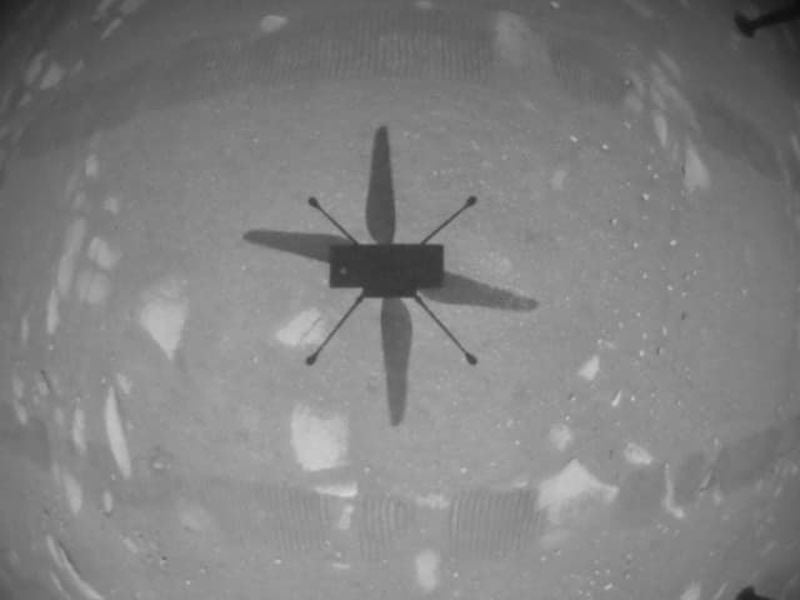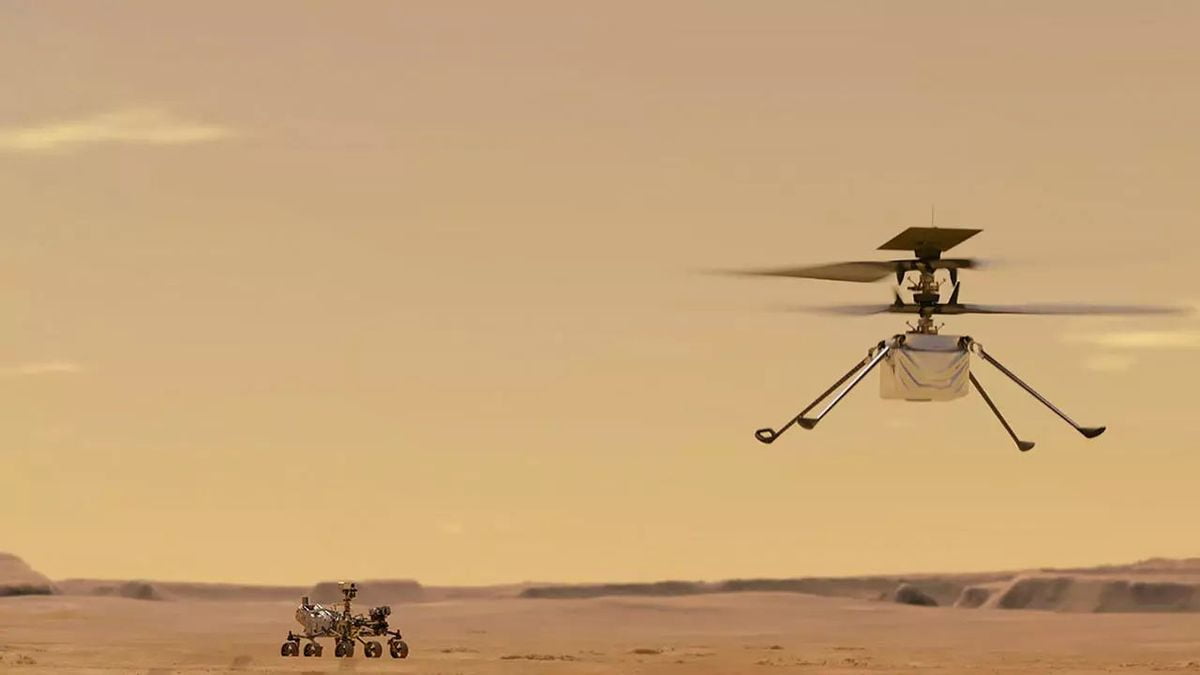Ingenuity helicopter makes its first flight on Mars. In the end, NASA succeeded in betting on a modification of the command sequence instead of modifying the onboard software and the Ingenuity helicopter made its first flight on Mars on April 19, 2021.
Ingenuity helicopter makes its first flight on Mars
Which corresponds to 12:33 at Jezero Crater, when Ingenuity rose to 3 meters, hovered for 30 seconds, and then descended again. The time was chosen by the helicopter team because it was the one with the best lighting conditions – it was almost noon – and weather conditions. The total flight time was 39.1 seconds.

This is the first powered flight on another planet in our history as a species. That’s nothing. Just over 117 years after the Wright Brothers made the first powered flight in a heavier-than-air aircraft on Earth. NASA has informally named the area where Ingenuity is now located Wright Brothers Field. Another NASA tribute to the Wright Brothers is that Ingenuity carries a piece of Flyer I fabric under one of its rotors.
As a curiosity, Kane Tanaka, born on January 2, 1903, and right now the oldest person on Earth, was born in a world where aviation did not exist and now sees her being born on Mars.
Following the flight, the International Civil Aviation Organization (ICAO) granted NASA and the Federal Aviation Administration (FAA) an official identifier for Ingenuity, IGY, and the call sign INGENUITY.

The initial data confirming the success of the flight, by the way, came from NASA’s Deep Space Network station in Madrid.
Over the next month, Ingenuity will be making increasingly more complicated flights. Although we must not forget that it is still a technological demonstrator, so it only mounts the flight instruments and a camera. But in the future, its heirs could be used to explore places on crater slopes and other elevations that a rover cannot reach. Or even to see what lies beyond the rims of some craters. It can also act as a scout to reconnoiter the terrain for future rovers or, why not, human-occupied vehicles.
And what is learned with it will also apply to Dragonfly, the octocopter that NASA plans to send to Titan in 2027.
It should be remembered, however, that Ingenuity is not the first aircraft we will fly on another planet. That honor will forever belong to the hot air balloons that the Soviets probes Vega 1 and Vega 2 released into the atmosphere of Venus in the summer of 1985.





